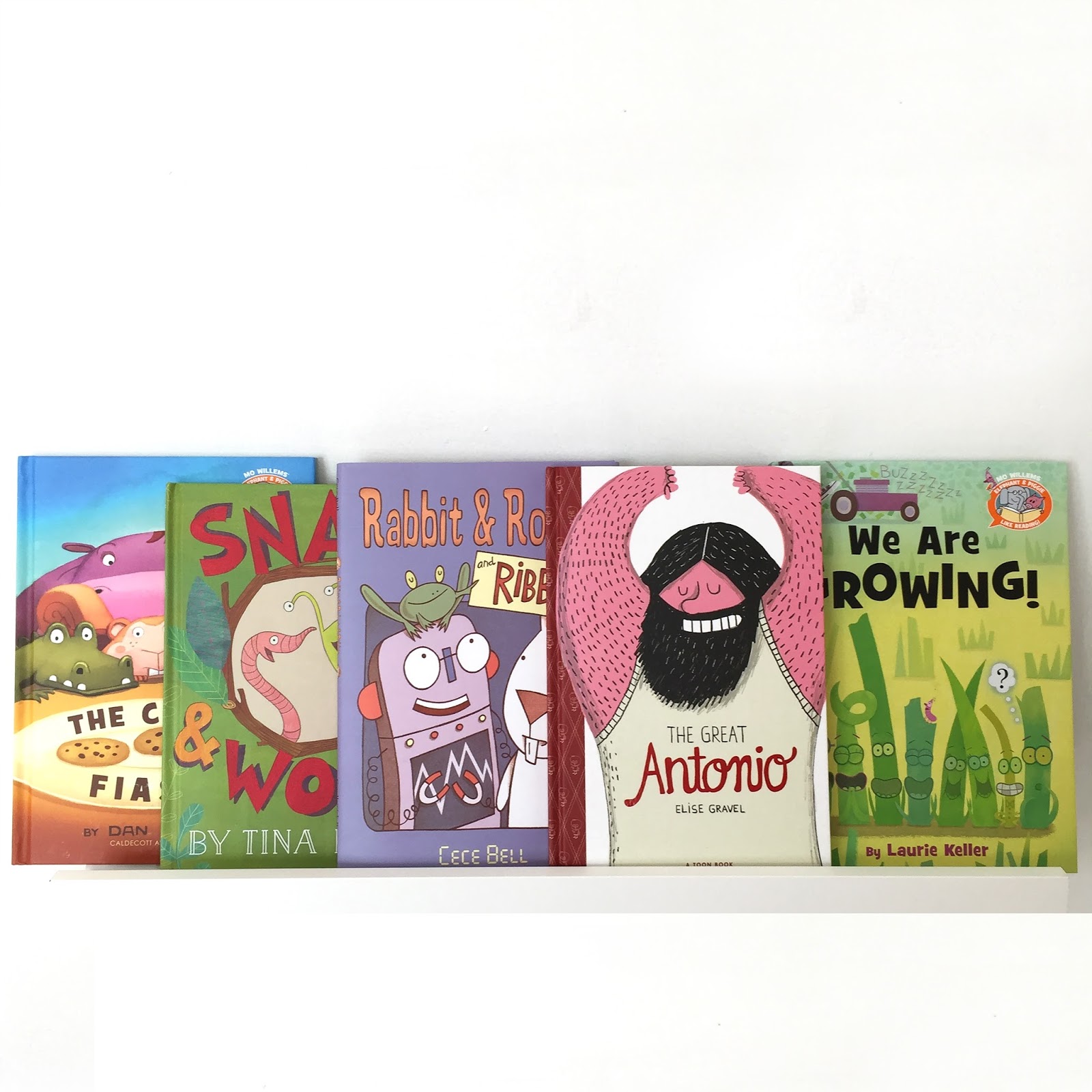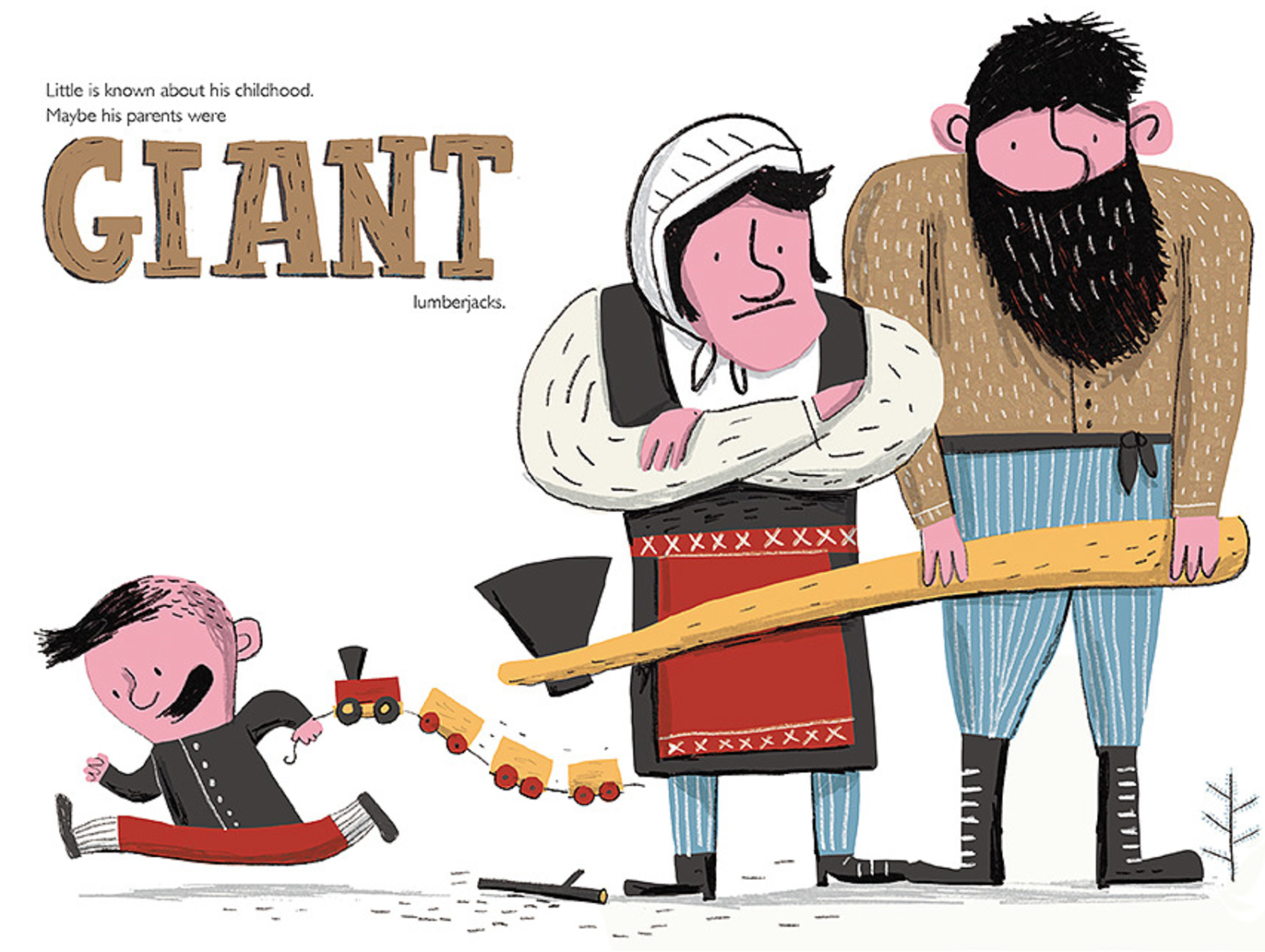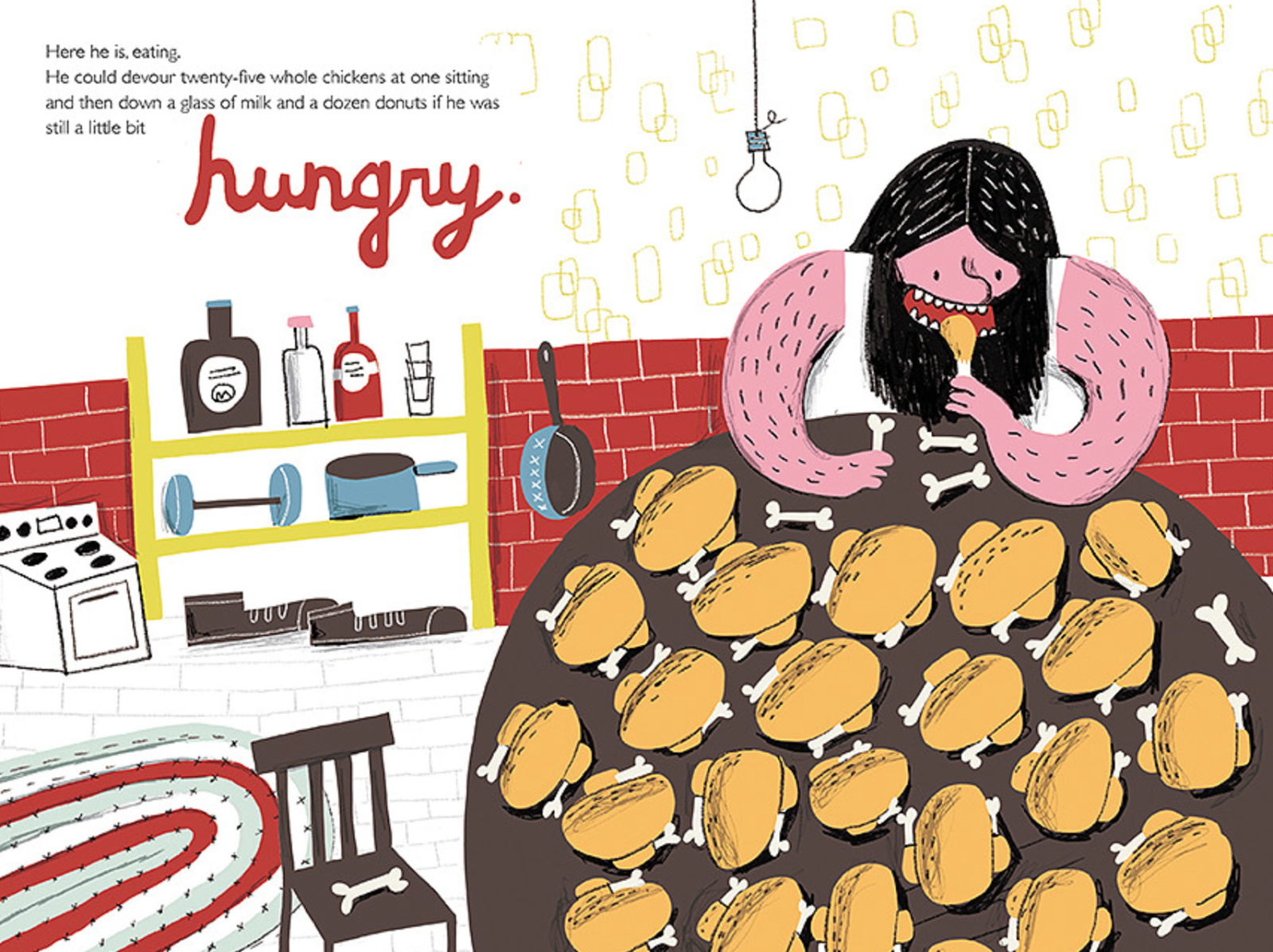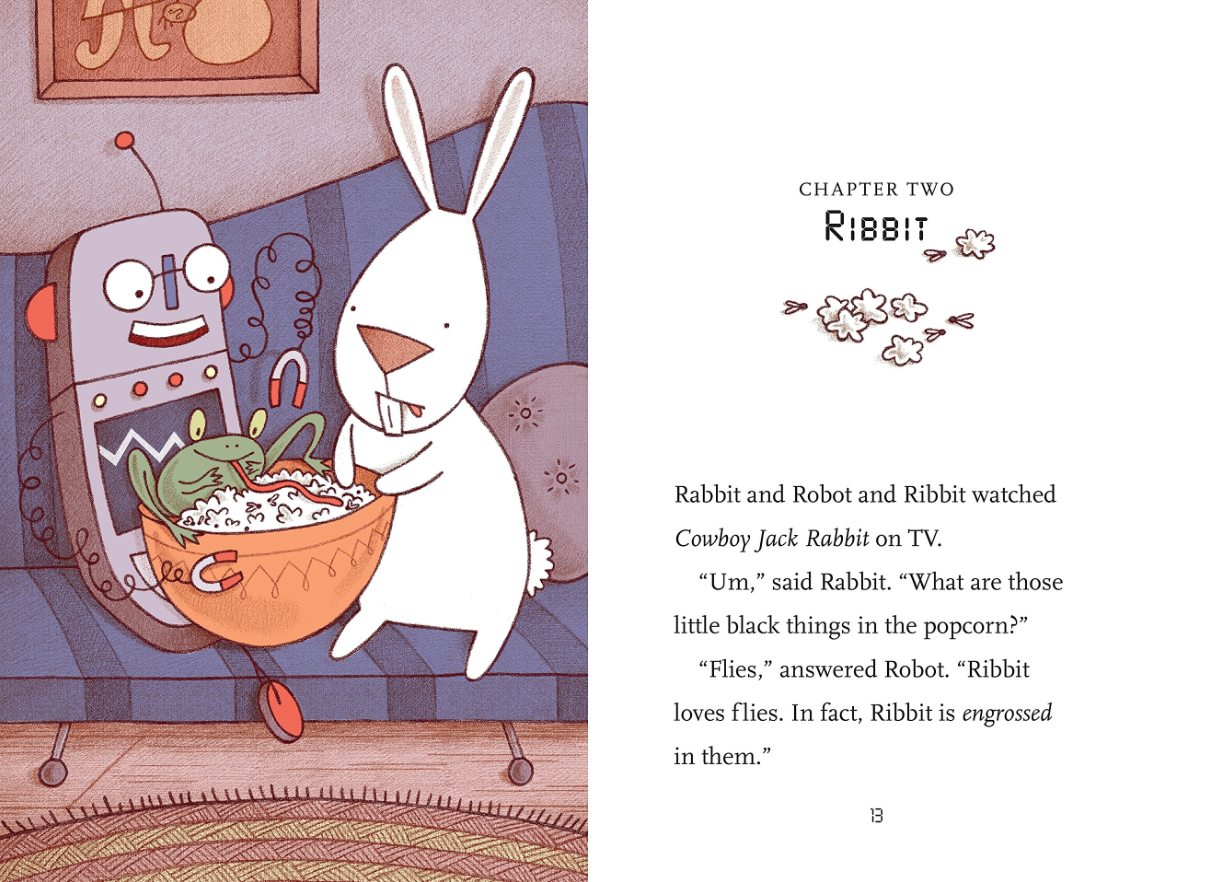Cybils & Easy Readers
Tuesday, February 14, 2017
Over the past six weeks I, along with numerous others throughout the country, have been reading nonstop. Reading everything from graphic novels to poetry to picture books. All to award another round of Cybils (Children's and Young Adult Bloggers' Literary Awards). Which were announced today. Since this was my first time as a Cybils judge, I wanted to share a little bit about my experience.
Last fall a friend from graduate school let me know about the open call for judges. Which I thought was exciting, but promptly forgot about. Then, another woman I know from Instagram mentioned needing additional judges. Weeks passed and I put off applying until the last possible minute. Luckily, I got it together in time to submit my application before the deadline.
Selecting Judges
The call for judges generally opens around early September and anyone can apply to be a judge. The application process strongly encourages a blog and some relationship to reading and/or writing book reviews, although that is not an absolute requirement. During your application you can select a desired genre of interest and whether you want to be a first or second round judge. The main difference between first and second round judges is that the first group of judges reads more, since their job is to cull all entries down to a manageable list of a dozen or so finalists. Luckily, the application process is all online and is relatively easy to navigate.
First round judges read all nominated books during November and December. So it's definitely an eyes-wide-open type of commitment during one of the busiest times of the year. This year, the first round of judges for the Easy Readers /Early Chapter Books category had a total of 64 titles to review. No small task. They narrowed it down to 12 titles (six per category), for us second round judges. Which was something I thought about often. Asking myself What did the first round judges see in this title? and What made them select it as a finalist?
Nominating Books
After judges have been selected an open call for book submissions is announced and anyone can nominate a book to one of the numerous Cybils categories. The caveat is that books must be published within that designated year and should be published in the United States. After open submissions end, publishers are invited to make submissions before the submission period is permanently closed.
What are Easy Readers?
This category covers the whole spectrum of titles for early elementary kids who are learning to read, from the very basic books for emergent readers to longer, illustrated titles for kids who are not quite ready for novels. Easy readers are typically 32-64 pages in length and can usually be identified by their large type, simple sentence structure, and colorful illustrations on every page. Well-known easy readers include series like Bink & Gollie, Henry & Mudge, and Frog & Toad.
At first I thought I wanted to be a picture book judge, because I love reading and reviewing that format. However in hindsight, I'm really grateful I was selected to work on a category that my budding reader will reach in no time. And in truth, we've already started reading easy readers and early chapter books aloud as part of our regular reading routine. Remember this post?
Over the last couple weeks we discussed each book as a group and selected a winner by consensus. Here I've broken down each of the six Easy Reader finalist and given a brief overview, along with my opinion of the book. Early Chapter books will be discussed in a separate post.
We Are Growing! by Mo Willems - The Elephant & Piggie like Reading series has certainly received a lot of press lately. Probably because it is new and likely because its predecessors are beloved characters from an equally cherished series in the children's book world. This spin off is an interesting approach, because presumably, Elephant and Piggie are acting as guides, taking a beginning reader from the passive listener phase of reading to becoming self-sufficient as an active readers; much like Go Dog, Go! did for previous generations. Meaning that the imitable duo introduces, then eventually closes each story, acting as though they were right there reading with you all along. But other than those cameos, Elephant and Piggie are not actually part of the story. Which may disappoint some readers. The characters in We Are Growing are eager blades of grass, each showcasing a particular talent for being the -est at something (e.g., tallest, curliest, greenest). All except one little guy. Under the watchful eye of his peers, he is pressured into revealing what he is best at, but is saved by the last-minute whirl of an approaching lawn mower. While I appreciate that the book showcases individual "strengths," if they can even be called that, the subtle message of competition is woven into the story's core. Indicating that, clearly we can't be content just being. We must be something more than someone else. A message that, however true or untrue and very likely for children to encounter on their own, isn't one necessarily worth promoting. In truth, this book disappointed me.
The Cookie Fiasco by Mo Willems - A common dilemma, four friends and only three cookies. This book is a fun approach to math and certainly appeals to the intended age demographic. With bold colors and large text, children are especially amused by the antics of Hippo's logic and nervous habit (breaking cookies apart). The large font clearly indicates a lot of LOUD declarations, emphasizing the drama of the situation. Although, in truth, I thought it was a little excessive and indicated too much yelling. However, young children often thrive off this type of hyperbole, making the book an amusing read for early readers.
*The Great Antonio by Elise Gravel - Born in Croatia, possibly from giant lumberjack parents, Antonio immigrated to Canada when he was 20 years old. Impressive not only by his behemoth size, weighing in at 460 pounds, Antonio became known throughout Montreal for his strength and wrestling abilities. He set world records and on occasion pulled buses by his hair! In fact, his braids were a sense of pride and Antonio used them in all sorts of imaginative ways. He lived outside a donut shop and played with children that were charmed by his gentle giant manners. An amusing account of one of the great strong-men of our day. In characteristic comic-book/graphic novel style, Elise Gravel showcases the funny and absurd aspects of life with aplomb; proving once again, through bold images and typography, that she has mastered the art of storytelling.
Snail and Worm: Three Stories about Two Friends by Tina Kugler - The text and plot seem too simple for an easy reader, but too long for a picture book. The story begins with a game of tag, turned somewhat perplexing when it involves inanimate objects, like a rock and stick. When Worm appears on the scene he seems just as confused by Snails antics. End scene. The second story is a bit more humorous as Snail climbs up a flower and then causes the flower to bend back to the ground. Worm's encouragement in this story creates a solid dialog, one that early readers can easily follow, enhanced by a slight color variation in the text. Finally, the last story is about locating a lost pet and starts like a game of 20 questions. Snail seems fixated that Worm's lost pet is a spider, one Snail is supposedly afraid of. In the end it turns out Worm's pet is a dog and Snail keeps a spider for his pet. The humorous elements in this story will likely appeal to a young audience, but I was not charmed by Snail's daft character flaw. Nor the illustrations. The lack of quotation marks also bothered me, making the exchange between the two characters difficult to follow.
The first four books in the Easy Reader category are indeed intended for very early readers. Large text, simple plots, and a generous amount of images make these books suitable for emergent readers ages 4-8. The next two books are more advanced and straddle the line between easy reader and early chapter books, recommended for ages 5-9.
The Infamous Ratsos by Kara LaReau - Here we have two brothers and a father. Each trying to be tough. Tough guys do tough things and the best way these two hooligans can think of being tough is to make trouble for others. However, each of their attempts ends in unintended acts of kindness. From returning a stolen hat, to shoveling snow, and finally providing a sandwich for the new kid at school. These two can't seem to get it right; or wrong rather. Foiled time after time, the book is somewhat formulaic in its approach. Although humorous, it neglected a natural segue from chapter three to four, which was slightly jarring as a reader and probably my biggest complaint about the entire book. Otherwise, I appreciate that the concluding pages affirm that life is tough enough and that maybe a little more kindness is what is actually needed.
*Rabbit and Robot and Ribbit by Cece Bell - Four chapters all with the same title. An interesting beginning. But I was immediately drawn to the trio of tongue-twisting characters. Kids will likely get a kick out of the ongoing "engrossed/gross" joke throughout the book and will certainly relate to feeling out of place in a third-wheel situation. Robot's Emotion Decoder is both humorous and helpful, as young readers are still developing insight to social cues, helping them decipher the emotions of others. Which they can see in the interactions between Rabbit and Ribbit, who, later, set aside differences, to work together to revive Robot. This story is not only an amusing take on friendship and inside jokes, it portrays accurately punctuated dialog, in a snappy exchange, helping early readers understand sentence structure and acquire language literacy, all while allowing them funny illustrations to coincide with the text. Plus the author's note is definitely worth reading. Overall, a really excellent read.
*Indicates my favorite books in the easy reader category. Click here to read part two.
My Bookbloom All rights reserved © Blog Milk Powered by Blogger





I've always said my dream job would be to read books. I could proofread and give my honest opinion before they are ever released! Of course my dream is unattainable but holy cow....that would be heavenly. Being a judge (first or second) would be lovely too! Might have to look into that next time. My IG handle is freebie.brittany
ReplyDeleteLoved reading about the process! So interesting! IG handle is @ californiatoddler ��
ReplyDeleteWe've only read one of these, so we have some work to do! Thanks :) IG @ jennylacika
ReplyDeleteI love anything Mo Willems! Can't wait to check out the other finalists. Thanks for your work putting this great information together. I'm @talkwordytome_ :)
ReplyDeleteI've been on the hunt for some good books for my first grader. This would be fantastic! My IG is @simply_alicia
ReplyDeleteInteresting, thank you for the review. Ig : @arinarensalita
ReplyDeleteLove your interesting review! @krisnanti
ReplyDeleteYou have some of our favorite authors on your list!! We haven't read most of these but love other books by them! ;) @amerced27
ReplyDeletehow interesting! Gotta get these books now! @shutch82
ReplyDeleteI'm always looking for great books for my kiddos! @ashamblin93
ReplyDeleteLovely selection! I don't know if I buy the books for my daughter or for myself �� @maryamforo
ReplyDeleteLove your blog! All the selection of the books are perfect for any child! I follow you on Instagram as @musicismycancer95
ReplyDelete